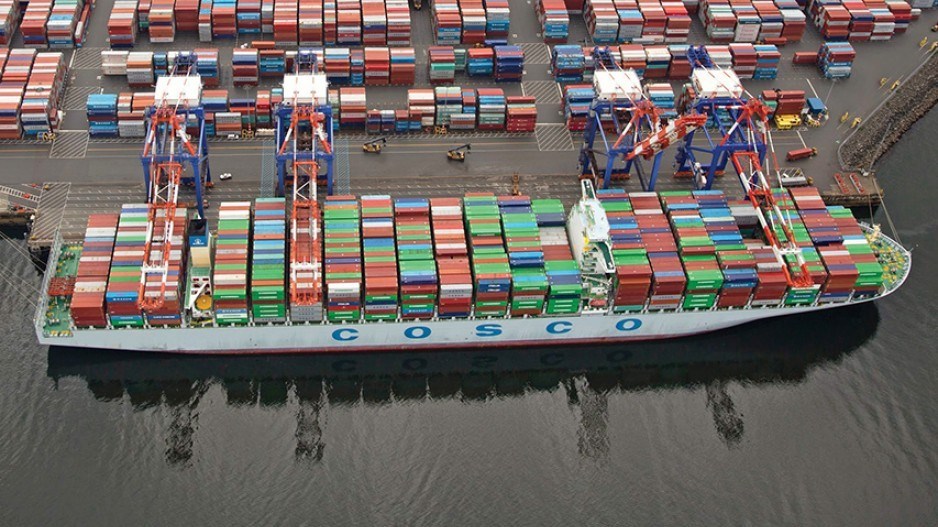Cargo capacity at the Port of Prince Rupert is planned to double by 2040 under a newly released land use plan.
Between 2018 and 2019, the port saw significant jumps in cargoes in most areas except canola and wood products.
Some 29.9 million tonnes of cargo moved through Prince Rupert in 2019 – 12% more than 2018 and a record port volume.
DP World’s Fairview Container Terminal saw movement of 1.2 million TEUs (twenty-foot equivalent units), an increase of 17% over 2018.
The plan puts annual capacity at 1.35 million TEUs.
“Container shipments are critical to future growth at the Port of Prince Rupert,” the plan said. “Containers are an efficient and standardized method for shipping goods of all types to markets around the world. Container shipping began at Fairview Terminal in 2007 and has consistently grown ever since, spurring a terminal expansion that was completed in 2017.”
Port president Shaun Stevenson said the plan would guide continued growth and diversification.
“The plan reflects the feedback we have received from local First Nations, local government and residents, balancing environmental and community values while we work towards creating even greater economic and employment opportunities,” he said.
The year also saw the AltaGas’ Ridley Island Propane Export Terminal come online and growth in Ridley Terminals’ coal handling where cargo levels were up 18% over the previous year. Thermal coal rose 46% while petroleum coke rose 9% and thermal coal dropped 3%.
In 2019, several infrastructure projects supporting growth and diversification at the Port of Prince Rupert were announced, including the Ridley Island Export Logistics Park, the Zanardi Bridge and Causeway Project, and the Metlakatla Import Logistics Park.
An anticipated $2 billion in capital expansion projects starting in 2020 was expected to support further cargo growth, including DP World’s Fairview Terminal expansion project that will bring the terminal’s capacity up to 1.8 million TEUs by 2022; the Vopak Pacific Terminal project, which is currently under environmental assessment and expects to make a final investment decision in 2020; as well as Pembina’s $175 million Prince Rupert Export Terminal which was deferred in March due to a downturn in gas prices and pandemic impacts.
The plan said strategic work involves building new port capacity; expanding and diversifying existing terminals and operations; planning and building new road, rail and utility infrastructure; and enabling the development of supporting services and industry clusters within the port.
The plan, a regulatory requirement under the Canada Marine Act, was last updated in 2011and will be formally reviewed again in 2025.
@jhainswo




